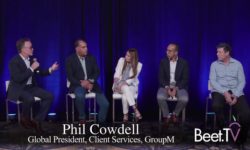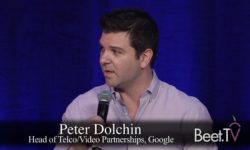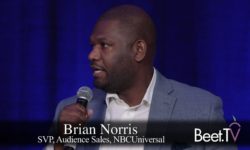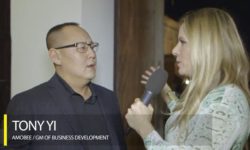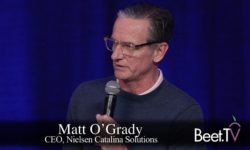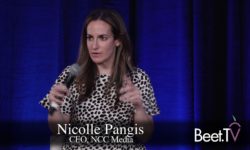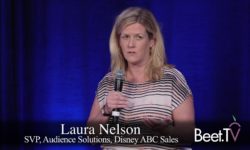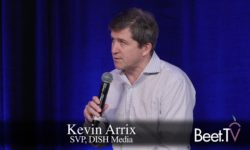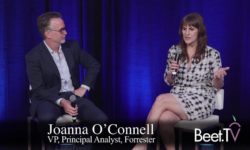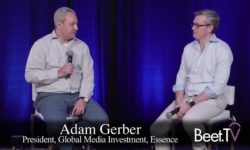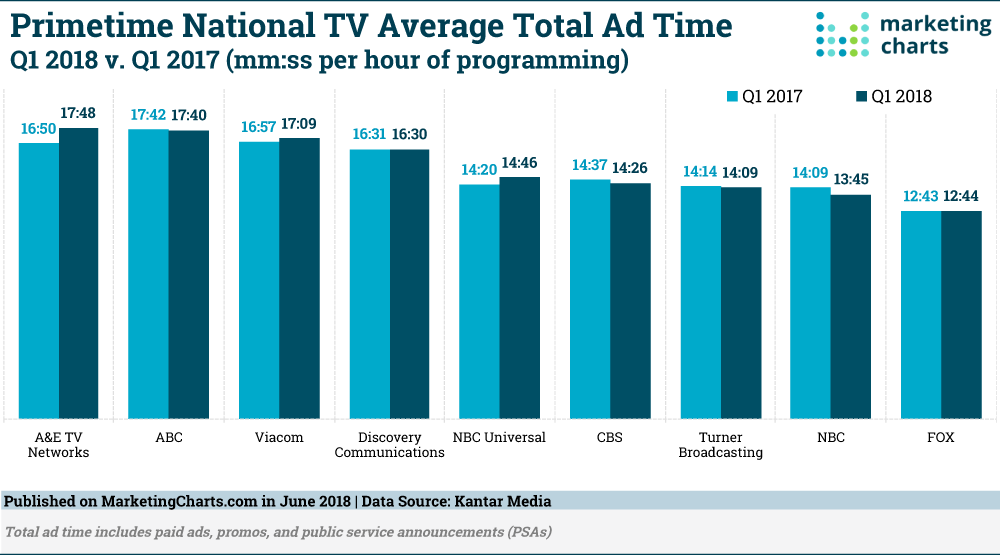SAN JUAN — How long should a commercial break be? How lengthy should a TV ad be? And how many is too many?
Over the last 18 months, TV networks have wrestled with that question, as booming VOD subscriptions has gone hand-in-hand with growing consumer frustration toward excess interruption.
That has spurred many networks to rip up and re-shape the norm for what a commercial break looks like, and how long it runs.
A Beet Retreat panel convened during three days of debate in Puerto Rico to discuss ad load and the viewer experience…
The big reduction that wasn’t
The debate kicked off when the analyst leading the discussion confronted two networks that have launched initiatives to reduce ad loads with data showing, in many cases, it has not come to pass…
Joanna O’Connell, VP, Principal Analyst, Forrester
“I saw this really interesting research from Kantar that ad load, for all the talk, had not actually declined from Q1 2017 to Q1 2018. Actually, it had data on all of your properties which was super interesting to look at…”
Peacock’s cut is coming
Answering O’Connell, a leading NBCUniversal executive re-stated the company’s intention to reduce at load by 20% in some TV formats…
Denise Colella, SVP, Advanced Advertising Products and Strategy NBCU:
“It’s really a challenge because we need to find a way that the consumers will enjoy the experience and the advertisers will get their message out, and of course we will make money … How do we produce content that’s meaningful to consumers? It’s something that we’re very focused on for the next year.”
Linear is hard to change
Another network exec echoed recent industry sentiment about the pace with which TV is turning itself around, suggesting that the traditional TV business as defined by its legacy medium may not change any time soon…
Ethan Heftman, VP, Precision/Performance, A+E Networks:
“In the linear format, we have an existing business model that unless I can figure out a way to sustain it and grow it the way I have to in my role, yeah, it isn’t just necessarily going to change. You have the opportunity in OTT and in new formats to build the ad model from the ground up.
Danielle Seth, VP, Client Partnerships, NCC Media:
“We obviously still have challenges as it exists today, I think, beyond just the consumer we’ve all experienced where you see the four ads. There are a lot of technical reasons why that happened. With video on demand, the ad load is a bit reduced compared to linear TV, but more importantly for the consumer experience, there are caps put in place. An ad can’t run more than two times per hour.”
Tech can solve for excess
If linear is hard to change, panel speakers suggested that technology platforms could help the networks and all parts of the value chain to make good on promises to reduce the frequency with which ads are seen, if not quite yet the number of them…
Denise Colella, SVP, Advanced Advertising Products and Strategy NBCU:
“It’s really incumbent on the technology providers to solve (it), regardless of who buys the ad, who puts it out there. It needs to be frequency-capped.”
Danielle Seth, VP, Client Partnerships, NCC Media:
“NCC’s point of view is through partnering with the likes of Freewheel, who is really focused on this topic, and can help control for frequency across platform, but then also building scale.”
Viewers are revolting
Beyond these implementation challenges, though, a bigger threat is evident. In 2019, the booming success of subscription video on demand, which often comes minus ads of any kind, is inculcating an ad-free viewing culture. Steadily, viewers used to immediate content are discovering a disdain for advertising they always knew was latent but which has now bubbled to the surface…
Denise Colella, SVP, Advanced Advertising Products and Strategy NBCU:
“Our woes are certainly existent, but really the reason why (consumers are) fleeing the ad model is because we make it unbearable.”
Joanna O’Connell, VP, Principal Analyst, Forrester:
“Generally, so far, television has fared better from an attitudinal standpoint than digital channels, but I fear that that will change because of the exact things that we’re talking about right now. (Consumers) understood the role that the ads played (in linear television).”
Re-think the ad unit
Panelists agreed that the very nature of an ad needs to be re-thought – and not just in terms of its length. Custom creative and interactivity should all be on the table…
Joanna O’Connell, VP, Principal Analyst, Forrester:
“Creative management platforms and DCO (dynamic creative optimization) technology is the most-under appreciated category of technology out there. The things that you can do with these technologies are really amazing, and yet the awareness is almost null in the industry. These guys are (just) playing around in formats like OTT.”
Proof of the pudding
Networks are more likely to respond positively and fully implement consumer-friendly advertising breaks if they can see data showing effectiveness – one panelist said that poses a problem in TV…
Lisa Lutz, VP, Product Management – Advanced Advertising TiVo:
“If I replace my (traditional advertising) pod with two 30-second (spots), instead of seven spots, what’s the retention? What’s the migration? Where are people going? Did this work? Did this not work? There’s always been such latency in terms of being able to get the data and measure it. (But) now (there is) the ability to have data at your fingertips and be able to really measure a few days after you run something.”
This video was produced in San Juan, Puerto Rico at the Beet.TV executive retreat. Please find more videos from the series on this page.
The Beet Retreat was presented by NCC along with Amobee, Dish Media, Oath and Google.







